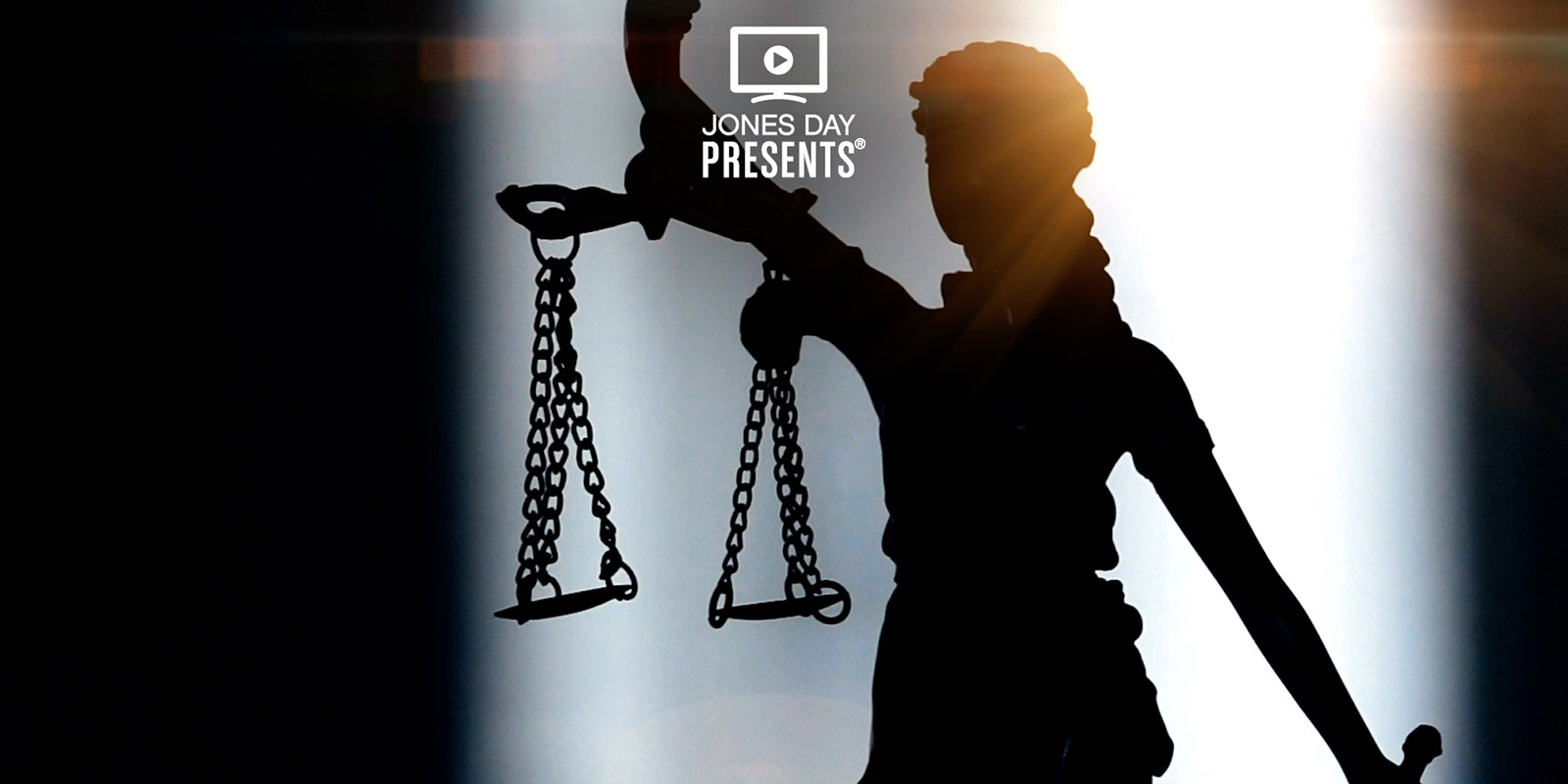
Jones Day Presents®: The Mechanics of Multidistrict Litigation: Streamlining Complex Cases
Increasingly, to try cases that involve multiple plaintiffs across various jurisdictions more efficiently, a judicial panel will create a multidistrict litigation (MDL). Jones Day partners Bridget O'Connor and Billy Laxton discuss some of the distinguishing factors of an MDL such as how common cases are combined for discovery but remain separate for trial.
A full transcript appears below.
Bridget O'Connor:
Multidistrict litigation is any case where we have numerous suits involving multiple plaintiffs, oftentimes across multiple jurisdictions. Frequently it'll be both state and federal cases, and you can wind up with both state and federal multidistrict litigations, or sometimes you have one or the other and then differentiated cases remain. Basically, it's a lot of suits in a complex litigation in a multi-form context.
Billy Laxton:
The largest percentage of multidistrict cases are going to be products liability cases, that's about a third. And in that bucket, you have defective drug cases, you have cases in the automotive industry. But then the rest of the MDL cases, they cover really a wide variety of topic areas. You can have antitrust multidistrict litigations, you can have intellectual property, employment law, and then increasingly we're seeing cases that are involving data breaches.
Bridget O'Connor:
The other category of sector cases are where there's been a disaster, like an air crash case or an oil spill, for example, where you'll have multiple parties that are involved may be injured, there may be property damage, there may be environmental claims, so that gives rise to the common core effects and circumstances, but multiple claimants that could become an MDL. Because of both the number of plaintiffs and people involved in the cases in these suits. As well as that, they often become quite high profile because of the impact that they can have both on the plaintiffs but also on the clients they often wind up also being accompanied by either other litigation or other investigations that happen concurrently and in parallel, thus further adding to the complexity.
Billy Laxton:
An MDL is similar to a class action in that both of them try to find an efficient way to manage a lot of different claims, so you can have a whole lot of claims that need to proceed forward instead of clogging up the federal system, you have class actions and you have MDLs. But they're very different because in an MDL the case remains separate, so you have a separately filed lawsuit that stays separate throughout. For convenience and for efficiency it's combined for discovery and then it blows back out at the end to be resolved on an individual basis. Whereas a class action, it's one case, one judge, one jury, one set of lawyers.
All MDLs are created by the JPML, the Judicial Panel on Multidistrict Litigation litigation. That panel will consists of seven judges that are appointed by the US Supreme Court Chief Justice, and they serve for a period of about seven years by practice. That group petitions to create a new MDL, either by a plaintiff or defendant might do that, and in some cases the panel itself will look at the docket in federal courts and say, we need to create an MDL.
Once they are considering it, there are some factors that they look at. They look at, are there overlapping sets of facts? Do we have some commonality here that makes sense to have it be efficient? They look at the interest of the parties, where are people located? Is this going to make it easier to have these cases combined into one thing? And they look at where the cases are in their lifespan? If some cases are really far along and some are in their infancy, then maybe it doesn't make sense to try to jam them all together into an MDL. In the normal course of an MDL though, the MDL gets created and then a judge will decide on bellwethers, and those bellwethers become the EXAMPLER trials. So you have 100 cases that get put into an MDL, then you pick two or three bellwethers, those cases actually proceed through trial, and then parties can say, okay, I know about where I stand and that allows for a global settlement.
Bridget O'Connor:
The tools available in multidistrict litigation are evolving as we speak, and that's one of the fun aspects of practicing in this area, is that practitioner that does these kinds of cases, we are helping to define what these cases are, how they'll be run, and that's one of the big opportunities that we have within these cases with the courts, is to propose ways to manage these cases. The way it's been done before isn't necessarily how it has to happen in the current case or the next case, and judges have a lot of latitude to be able to implement structures to manage the cases in the way that makes sense for that case.
Billy Laxton:
When a defendant faces an MDL, what they want to make sure they're doing is partnering with somebody who has the resources to be able to fight on multiple fronts at the same time, and make sure that the folks who are fighting in all those fronts aren't rookies. You want people who have experience in the courts where you are litigating and you want to have a team that can work together. If you're facing an MDL, chances are you're going to have state court cases you're also coordinating, and so you want to make sure that you have one law firm that's able to really provide services in all of the different venues where you're facing litigation.



